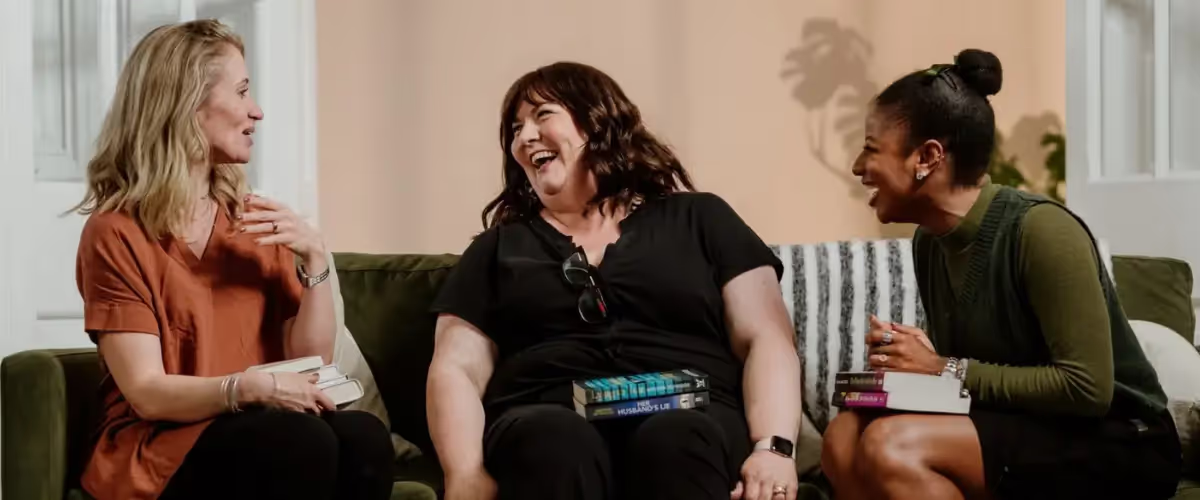You might have heard about situational irony, perhaps from the everyday examples in Alanis Morissette’s song lyrics. But what does situational irony mean in storytelling, and how does it differ from other powerful literary devices such as dramatic irony and garden-variety irony?
Situational irony shares many commonalities with situational comedy. The law of fate that sees dropped toast always landing buttered side down is extrapolated to the max.
—Amanda Reynolds
Writing coach Amanda Reynolds, author of multiple psychological thrillers, is here to explain all, with some situational irony examples of poetic justice and the types of ironic twists that authors use to turn intended meanings into actual outcomes.
With Amanda’s advice, you’ll learn to use this literary technique, which was evident even hundreds of years ago in the words of William Shakespeare, with confidence. Returning to your novel with the knowledge of situational irony safely in your back pocket means you can deliver some surprising twists to add depth and highlight themes, no matter your genre.

Dramatic irony: a literary device to supercharge your story
The job of a storyteller is to entertain and to keep the reader turning those pages. A guaranteed way to do that is to shock them by flipping their expectations with a situation that doesn’t go to plan. More than that, it can be the exact opposite of what was anticipated, where everything goes spectacularly wrong.
Situational irony occurs when an entirely unexpected outcome replaces the anticipated and foreshadowed turn of events—and if that about-turn is loaded with irony, all the better. The stakes are raised, and the drama ramped up. There’s no way we won’t want to know what happens next!
What is situational irony in literature?
While being similar to other forms of irony in storytelling—such as verbal irony, poetic irony, cosmic irony, or structural irony—situational irony involves a development nobody expected. A fire station burning down or a getaway driver running out of gas are both examples of situational irony being met with an unexpected plot twist (a fire station should never have a fire; we expect a getaway driver to check they have enough fuel).
Let’s go further by taking a look at a few examples of situational irony.
Situational irony example from classic literature
In classic literature, situational irony proliferates. Take Far From the Madding Crowd, for example. Poor Fanny Robin’s fate sticks out, her destiny sealed when she waits in vain at the wrong church to marry her true love, the dashing Sergeant Troy. Believing her to have humiliated him, Troy sets out to find a new love. The smallness of Fanny’s mistake is situationally ironic, contrasted with the all-encompassing result of that human error. The ‘if only’ is so loud it echoes through the rest of the story, amplified by the fallout for all the characters.

Example from women’s fiction
In Gina Sorell’s The Wise Women, protagonist Clementine Wise discovers that the house she has scrimped, saved, and sacrificed to buy, she actually doesn’t own. Her husband, Steve, has stolen all their money and used it to fund his failing carbonated vegetable water start-up instead. As writing coach Gina explains:
I positioned her as a woman feeling proud about finally achieving homeownership, who then discovers that she is actually renting when her landlord comes looking for the overdue rent check her husband was supposed to pay.
—Gina Sorell
This situational irony example of not only the deceit but also her main character’s reduced situation really ramps up the stakes.

Example from the suspense genre
In my latest book, Her Husband’s Lie, an example of situational irony occurs when a consultant gynecologist—a man we expect all women must be able to trust—takes the drastic step of leaving behind his career, home, family, and patients by faking his own death to ‘solve’ his money problems. It forms the central mystery of the book as his wife struggles to accept her husband’s ‘death’—but is that truly the situation, or is he in danger, too?
The irony is that the situation is so much worse than we first expect. The trust he embodies, or should do, is very much in question.

Incorporating situational irony into your story
Here are my top tips, with a few more examples:
1. The ‘What If’ game
The ‘What If’ game is such a useful tool to use when building a story. It allows us to move beyond our initial thoughts to think of unexpected situations and outcomes that take us, and therefore our characters, out of our comfort zone.
- What if the opposite of what I think will happen has happened?
- What if the one thing my character wants is impossible? Surely it can’t be, can it?
- What if I throw in an extra obstacle? Another situation that is so appalling it makes me squirm?
I bet you can think of a hundred questions, many of which will turn your story on its head and surprise your readers, but you only need three or four to move you on from those initial expected outcomes.
It’s great fun to see what you can come up with by asking this simple question. Give it a go!
2. Make the outcome fit the story
Everything must earn its place, including the ironic situation. It has to further the plot and chime with your characters’ motivations. There is no point in shocking for the sake of it if you sacrifice all logic and reason just for an ironic perspective. The bombshell has to make sense and stay within the bounds of plausibility, or the reader will no longer believe in what you are creating. Your situational irony has to make sense!
.avif)
3. Have someplace to go
Once you’ve surprised your reader, you still need someplace for your story to go, thereby raising the stakes even further so the fallout has massive consequences for our poor beleaguered characters. (Yes, we have to be really mean, whether they are naive protagonists or unreliable narrators!)
Fanny Robin pays the ultimate price for her accidental error, but the other players in the story do, too: Bathsheba, Troy, and even Boldwood. They are all torn apart by the doomed marriage that never occurred. How different it could have been!
If you can make your readers feel the same level of regret, repeating that mantra, ‘if only...,’ then you’ve created some brilliant situational irony that will take your story to the depths of a universal and emotional truth.
{{blog-banner-9="/blog-banners"}}
4. Situational irony and humor
It doesn’t always have to be doom and gloom. Situational irony shares many commonalities with situational comedy. The law of fate that sees dropped toast always landing buttered side down is extrapolated to the max.
Example from the crime genre
I love the dark wit of Lamb to the Slaughter by Roald Dahl. It’s hands-down my favorite short story ever, and I guess as a writer of dark thrillers myself, it’s unsurprising that the twist—satisfying, grotesque, and clever as well as funny—thoroughly appeals to me. I won’t spoil it for you, but it’s an absolute masterclass in creating a killer twist that is darkly ironic.

Situational irony in this form can also be light as a feather in literature. Examples of this can be found among the wonderful lines in David Nicholls’s books that reveal his characters’ deprecating humor despite the bumps in their roads—before he devastates us with unexpected twists.
5. Be careful of coincidence
In reality, coincidences both big and small crop up all the time. From meeting a neighbor halfway across the world to a life-changing lottery win, we know these things feature in real life, but in literature they’re much harder to explain. For most people, coincidences in fiction can feel too convenient, even lazy. Writers must make things occur for a reason, knowing that fact can get away with being stranger and more random than fiction.
Often, the reason for an ironic turn of events may elude us at first. Don’t worry; it will come to you later after the fact, but not in the finished story. We have to address that doubt on the page at once, lest it fester and grow into disbelief.
Take that chance encounter with a neighbor in an unexpected setting. Fate? Or could it have been by design? Could it have happened because of one character’s connivance, which we, as the author, can let the reader in on to dispel any implausibility?
.avif)
6. Become an observer of situational irony
We all encounter examples of situational irony often—the day that turns out entirely differently than we imagined due to a delayed train, for instance. We need to open our eyes to these moments and the fictional possibilities reality offers. It doesn’t have to be life-changing, but using these small, unexpected—and, therefore, ironic—turns of events to bring pathos and drama to our stories is a good source of authentic material.
A great tool to show, not tell
These real examples of situational irony allow us to show the reader a lot about our characters without telling them. How do our characters deal with these frustrations? With sarcasm? Do they get angry or sad? Do they shrug their shoulders or roll their eyes when life has other plans for them? Are they fatalistic, or do they rail against the injustice?
7. Use situational irony for maximum impact
Knowing when to deploy that moment of unexpected irony is a skill. The best time will likely be at the last moment, so the reader truly believes they know what’s going to happen, only to have the rug pulled from beneath their feet at exactly the same moment the character loses their footing, too. This involves a commitment to misdirection. The reader has to be completely misled to the point that there is no other outcome possible except the one they anticipate. Then...
BOOM!
Everything changes.
Readers are clever; they have a sixth sense known as ‘narrative expectation,’ where they understand the tropes or norms of a genre. But they love to be surprised—as long as it makes sense.

Example from contemporary fiction
Again, no spoilers, but if you’ve read One Day by David Nicholls, you will know there is a huge moment of terrible situational irony that changes the narrative expectation of what is—up until that point—a romantic comedy with all the attendant genre expectations. I still recall the moment I read that scene. My friend’s face in the cinema when the movie reached that point (she hadn’t read the book) was one of utter disbelief!
8. Have fun with situational irony
My final tip is to enjoy the dastardly way you can control your fictional universe. Make things happen, be daring, see where the words take you. Life may be random, but our stories are made by us. We are in total control, plot twists and all.
Isn’t that such a joy?
Welcome home, writers. Join us on the world’s best creative writing courses to create, write, and complete your book. Sign up and start today.



.avif)
.webp)
.avif)
.avif)